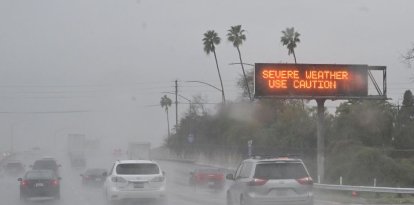45% of the country's tap water is contaminated with toxic chemicals
A Geological Survey study revealed that substances known as 'forever chemicals' (harmful to humans) have been detected in the water of 70% of the nation's urban areas.

(Pexels).
A study conducted by the U.S. Geological Survey (USGS) revealed that nearly half of the water (45%) that comes out of U.S. taps is contaminated with toxic per- and polyfluorinated alkyl substances (PFAS).
These elements (PFASs) are commonly known as forever chemicals, as they are a group of more than 12,000 synthetic chemical compounds that do not decompose easily in the environment and when ingested by humans tend to accumulate in the body instead of being broken down and expelled.
Ingesting high concentrations of PFASs has been shown to be linked to diseases such as cancer, reproductive problems, thyroid function disorders, immune deficiency and high blood cholesterol levels.
1-s2.0-S016041202023003069-main (1) by Verónica Silveri on Scribd
1-s2.0-S0160412023003069-ma... by Verónica Silveri
Urban areas are the most affected
The study found that, by a large margin, urban areas have the highest concentration of water polluted by the forever chemicals. PFASs were detected in more than 70% of these heavily populated areas, compared to 8% found in rural areas with fewer residents.
In the country, the regions with the highest exposure to PFASs are: "The Great Plains, Great Lakes, Eastern Seaboard, and Central and Southern California."
Since 2002, there has been a decrease in the levels of these chemicals in the blood of Americans. However, today, most citizens still have detectable concentrations of PFASs in their bodies, according to the Agency for Toxic Substances and Disease Registry.
First time someone tests and compares PFAS in tap water
Over a six-year period (from 2016 to 2021), the analysis evaluated the existence of 32 types of PFASs (as not all are detectable with current technology) using samples acquired from 716 sites nationwide. The study's lead author, Kelly Smalling, stated:
A USGS release highlighted the importance of the report, as it marks "the first time anyone has tested for and compared PFASs in tap water from private and government-regulated water supplies on a broad scale throughout the country."
RECOMMENDATION





















